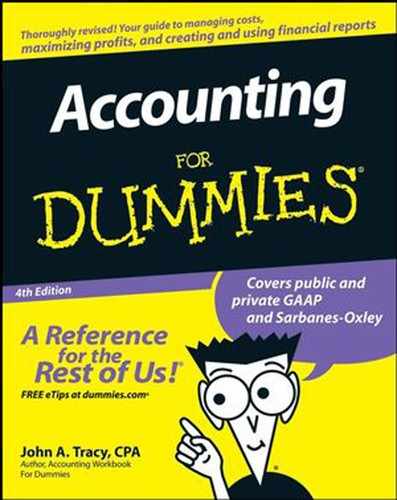7.6. Scanning the Expense Horizon
Recording sales revenue and other income can present some hairy accounting problems. As a matter of fact, the Financial Accounting Standards Board (FASB) — the private sector authority that sets accounting and financial reporting standards in the United States — ranks revenue recognition as a major problem area. A good part of the reason for putting revenue recognition high on the list of accounting problems is that many high profile financial accounting frauds have involved recording bogus sales revenue that had no economic reality. Sales revenue accounting presents challenging problems in some situations. But in my view, the accounting for many key expenses is equally important. Frankly, it's damn difficult to measure expenses on a year-by-year basis.
I could write a book on expense accounting, which would have at least 20 or 30 major chapters. All I can do here is to call your attention to a few major expense accounting issues.
Asset impairment write-downs: Inventory shrinkage, bad debts, and depreciation by their very nature are asset write-downs. Other asset write-downs are required when an asset becomes impaired, which means that it has lost some or all of its economic utility to the business and has little or no disposable value. An asset write-down reduces the book (recorded) value of an asset (and at the same time records an expense or loss of the same amount). A write-off reduces the asset's book value to zero and removes it from the accounts, and the entire amount becomes an expense.
Employee-defined benefits pension plans and other post-retirement benefits: The GAAP rule on this expense is extremely complex. Several key estimates must be made by the business, including, for example, the expected rate of return on the investment portfolio set aside for these future obligations. This and other estimates affect the amount of expense recorded. In some cases, a business uses an unrealistically high rate of return in order to minimize the amount of this expense.
Certain discretionary operating expenses: Many operating expenses involve timing problems and/or serious estimation problems. Furthermore, some expenses are very discretionary in nature, which means how much to spend during the year depends almost entirely on the discretion of managers. Managers can defer or accelerate these expenses in order to manipulate the amount of expense recorded in the period. For this reason, businesses filing financial reports with the SEC are required to disclose certain of these expenses, such as repairs and maintenance expense, and advertising expense. (To find examples, go to the EDGAR database of the Securities and Exchange Commission at www.sec.gov.)
Income tax expense: A business can use different accounting methods for some of the expenses reported in its income statement than it uses for calculating its taxable income. Oh, boy! The hypothetical amount of taxable income, as if the accounting methods used in the income statement were used in the tax return, is calculated; then the income tax based on this hypothetical taxable income is figured. This is the income tax expense reported in the income statement. This amount is reconciled with the actual amount of income tax owed based on the accounting methods used for income tax purposes. A reconciliation of the two different income tax amounts is provided in a technical footnote schedule to the financial statements.
Management stock options: A stock option is a contract between an executive and the business that gives the executive the option to purchase a certain number of the corporation's capital stock shares at a fixed price (called the exercise or strike price) after certain conditions are satisfied. Usually a stock option does not vest until the executive has been with the business for a certain number of years. The question is whether the granting of stock options should be recorded as an expense. This issue had been simmering for some time. The Financial Accounting Standards Board (FASB) finally issued a pronouncement that requires a value measure be put on stock options when they are issued and that this amount be recorded as an expense.
NOTE
You could argue that management stock options are simply an arrangement between the stockholders and the privileged few executives of the business, by which the stockholders allow the executives to buy shares at bargain prices. The granting of stock options does not reduce the assets or increase the liabilities of the business, so you could argue that stock options are not a direct expense of the business; instead, the cost falls on the stockholders. Allowing executives to buy stock shares at below-market prices increases the number of shares over which profit has to be spread, thus decreasing earnings per share. Stockholders have to decide whether they are willing to do this; the granting of management stock options must be put to a vote by the stockholders.
In any case, the main problem today concerns how to put a value on stock options at the time they are issued to executives. The FASB pronouncement opened the door to alternative methods for calculating the value of stock options. Guess what? More than one method is being used by public businesses to measure the expense of management stock options. This should not be a surprise to anyone. It will take some time for things to settle down on the preferred way to measure the cost of management stock options.
Please don't think that the short list above does justice to all the expense accounting problems of businesses. U.S. businesses — large and small, public and private — operate in a highly developed and very sophisticated economy. One result is that expense accounting has become very complicated and confusing.
